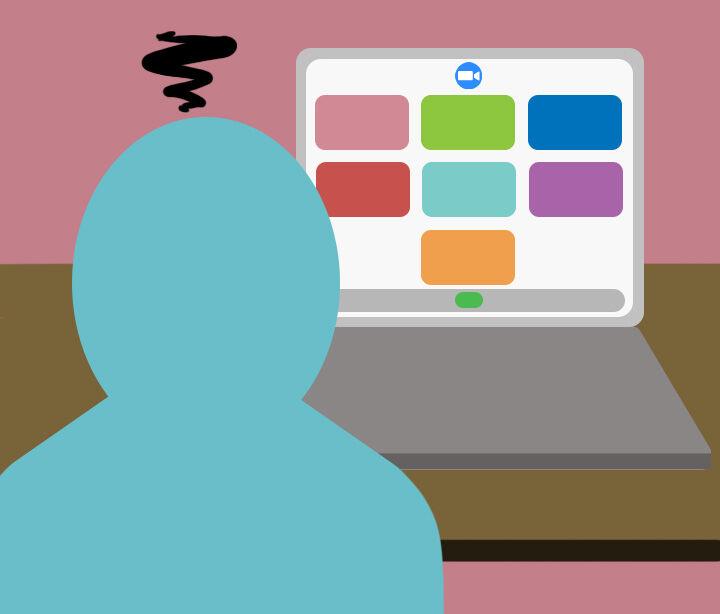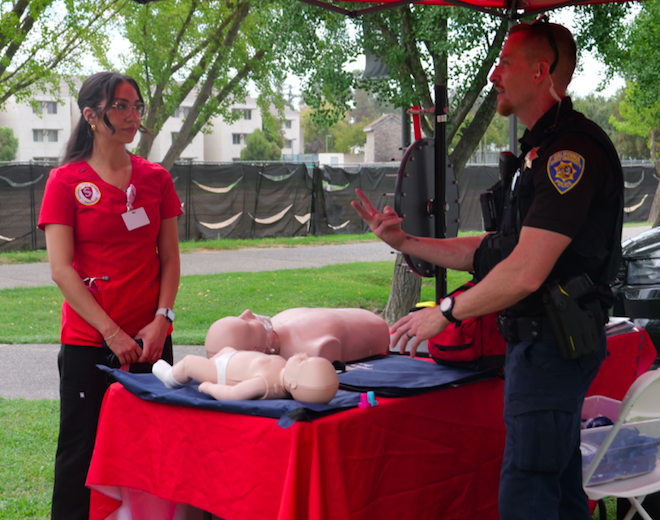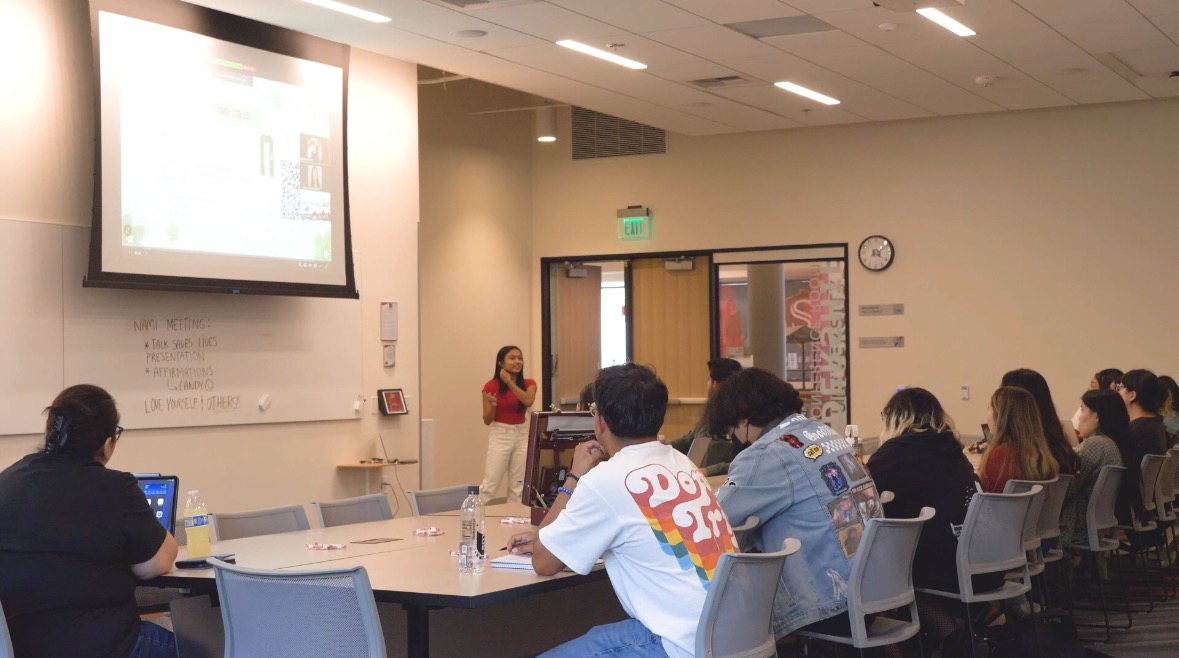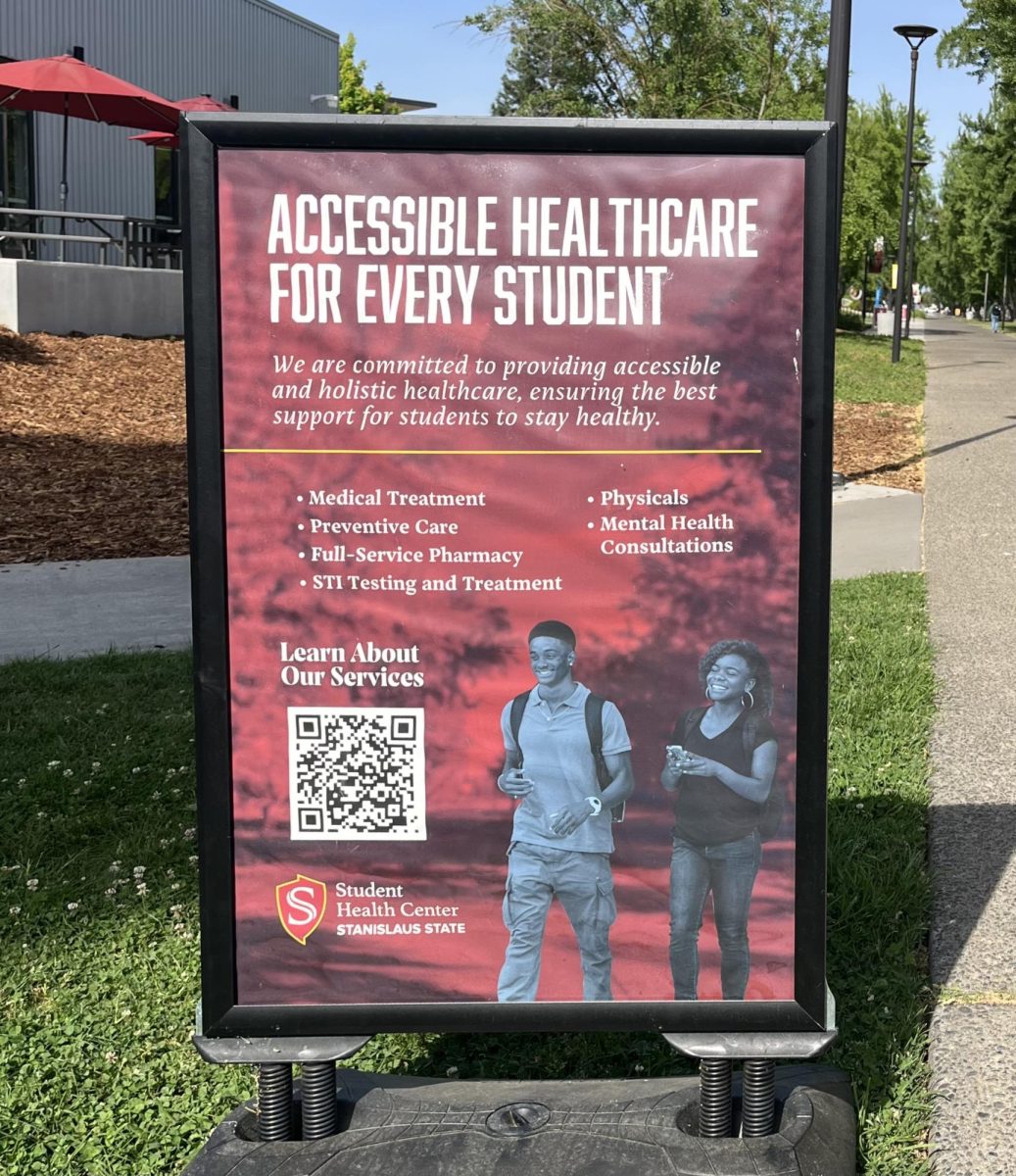With the coronavirus pandemic still raging across the country, many universities, including Stan State, have chosen to conduct this semester in a primarily virtual format. This transition has been physically and mentally taxing for several students, faculty and administration.
In a poll taken on the Signal Instagram story, 87 percent of those who responded indicated that distance learning has caused them physical discomfort such as headaches, dry eyes and muscle stiffness.
Between work, classes and meetings, it is not uncommon for people to spend multiple hours on Zoom a day. “I was on Zoom for almost six hours on Wednesday. My body just ached afterward- back, neck, legs and hips,” said Stan State student Raiza Dominguez (Master’s of Social Work program).
Dr. Mary Jo Stanley, R.N. explains why distance learning has been taking such a toll on our bodies. “The intensified time on our screens prevents activity and can add to problems associated with stasis or lack of physical movement,” says Dr. Stanley, adding that it’s important to take breaks to get up and move around.
Dr. Jennifer Johnson, professor of social work in the masters program, expands on the importance of being physically active during breaks.
“In between classes you need to get up and move around. There has got to be some kind of movement there. Not only for the physical benefit, but you have to remind yourself that you have choice in the world because right now during COVID, a lot of that choice has been taken away.”
Dr. Johnson explains that choice is an important part of regulating our nervous systems.
“What comes along with choice is power and control, and as a species we do not like to believe that we are without power or control. That’s why the nervous system craves choice. So all those students who are stressed, they have to remind themselves that they have choice over right now.”
Whether you use your breaks to go on a run, or simply to stretch in your room, the most important thing is that you consciously remind yourself that you are choosing to do this action and that you have control over what you do.
In addition to the muscle stiffness, students mentioned experiencing headaches and dry eyes after their Zoom classes. According to the American Optometric Association (AOA), many people who spend a lot of time in front of a screen experience “computer vision syndrome” or “digital eye strain.”
In an article discussing computer vision syndrome, the AOA explains that some symptoms may include eye strain, blurred vision, headaches, and neck and shoulder pain. If these symptoms sound familiar, the good news is that there are multiple ways to combat the issue.
Again, Dr. Stanley suggests that students would benefit from frequent breaks. “Take a break from your computer and don’t wait until the last minute cramming to write a paper or do an assignment that will keep you at your computer for hours.”
At the beginning of the week, students may want to develop a schedule for doing their assignments. Instead of waiting to do all of your assignments on the day that they’re due, spread them out throughout the week so that you aren’t stuck at your computer for hours on end.
The AOA suggests using the 20-20-20 rule. “Take a 20-second break to view something 20 feet away every 20 minutes.” This will give your eyes a break from the intense focus on the screen. It is also important to make sure to blink frequently because our eyes tend to blink less often when viewing a screen.
Dr. Johnson suggests turning off your video for a few seconds and simply closing your eyes and listening when your eyes and mind become tired in class.
To alleviate neck and shoulder pain, the AOA says to make sure your screen is 15 to 20 degrees below eye level in order to achieve the proper body posture. Also, adjust your lighting so that there is not a glare on the screen.
With all of the discomfort associated with prolonged screen usage, it’s no wonder that we are exhausted after using Zoom. This experience is so common, that the term, “Zoom fatigue” has become increasingly prevalent.
One University of Southern California student, Lilah Capp (sophomore, Environmental Studies) commented, “Long zoom lectures are much more exhausting than the long in-person lectures were.”
Students may wonder why they are so much more mentally exhausted after an hour on Zoom than after multiple hours in person. Dr. Stanley explains why this is true.
“To communicate, we process both verbal and non-verbal cues. On a Zoom meeting, we have to work harder to process the information such as tone, pitch, and body language. This can be even more difficult with delays in connection,” Dr. Stanley says.
Additionally, Dr. Johnson points out that when in person, we inevitably get more mental breaks than when we get online. “When we are face-to-face we can rely on all kinds of healthy interruptions like a whispered side exchange or the distraction of getting a question answered, but in a video chat it’s not the same.” So much sustained focus tends to make our minds very tired.
While some students may be suffering from too much focus, others may be experiencing the opposite. While working from home, it can be very tempting to try to multitask. We might believe that we are saving time by paying our bills while attending a Zoom lecture, but Dr. Johnson warns us against doing this. “In reality the human species can not multitask. It’s a huge myth that we can multitask and be 100 percent effective.”
Dr. Johnson says that multitasking will actually make whatever you are doing twice as hard. To avoid the temptation, she has one helpful tip. “If you have a zoom class at 1:00, close all the other tabs before 1:00.” By closing your tabs when you start class, it will be less tempting to click over and divide your focus.
Aside from the physical discomfort, the fatigue and the lack of focus that distance learning has caused us, many students have also experienced increased stress and emotional distress.
Stan State student, Diana Gutierrez, (junior, Criminal Justice) has been feeling the effects. “I have a large workload from each class and it’s very stressful and overwhelming.”
For those who are experiencing increased stress, it is important to know that their response is perfectly natural. The coronavirus pandemic has turned our worlds upside down, and this has not gone unnoticed by our nervous systems.
Dr. Johnson expands on her explanation of how our nervous systems are being affected by all of these changes.
“There are three elements that a nervous system is always looking for, and when the nervous system finds these three elements, it allows a person to navigate through the world in a very healthy way. The three elements are context, choice and connection,” says Dr Johnson. “Those three areas are being interrupted by COVID.”
COVID has taken away our context (our ability to make sense out of things) because we do not yet understand much about the virus or our future. Choice has been taken away because we have to adhere to certain rules in order to stay healthy, and connection has been taken away because we must remain socially isolated.
Dr. Johnson explains that it is so important to create choice, context and connection, because when we do not have these things our nervous system becomes dysregulated. When our nervous systems are dysregulated, we become easily irritated, defensive, or in more extreme instances, it can cause us to shut down and become extremely forgetful and foggy.
In order to continue to give our nervous systems these three elements, we have to get creative. As mentioned above, Dr. Johnson explained how we can create choice by reminding ourselves of the small things that we have control over.
To create context, Dr. Johnson suggests repeating the facts that we know. This helps us feel more grounded and sure about the world. For example, we can repeat the fact that there are labs all over researching a vaccine for COVID.
In order to achieve connection, Dr. Johnson says that we should try to schedule virtual interactions that have nothing to do with work, school or our stressors.
One suggestion is to ask a friend to FaceTime and to simply discuss a show that you are both watching, or a book that you have both read. This will help build connection in a way that professional interactions do not.
Dr. Johnson explains that online class feels so much different from in person learning because when we are in person, we are able to feed off of each other’s positive energy and this does not happen in Zoom class.
“We actually get fueled and nourished by other nervous systems, when we’re in the presence of others,” Dr. Johnson says.
You may have noticed that certain friends give you energy when you hang out with them and certain people drain your energy. Dr. Johnson says that this has to do with their nervous systems. “Your nervous systems are actually feeding off one another. Sometimes we can really pick up on the nervous system of another.”
Many of us are feeling this lack of positive energy while learning from home. Stan State students Yajaira Salinas (senior, Biology) expresses this saying, “It (distance learning) has made me really sad. I definitely appreciate in person learning so much more.”
Although this adjustment has not been easy, we are all learning what it will take to remain mentally and physically healthy while learning and working from home.
Dr. Johnson wants students to remember one thing above all else. “All of the students who are doing class online need to give themselves permission to take breaks, and to mess up. This is new for everyone. The worst thing that they can do is shame talk themselves. There is no room for shame talk. When you shame talk or trash talk yourself, you actually worsen any situation that’s already distressing or stressful.”
So, as you take your study breaks, adjust your desk height, and calm your nervous system, remember to have patience with yourself and to be kind. We are in hard times, and you are doing your best.







